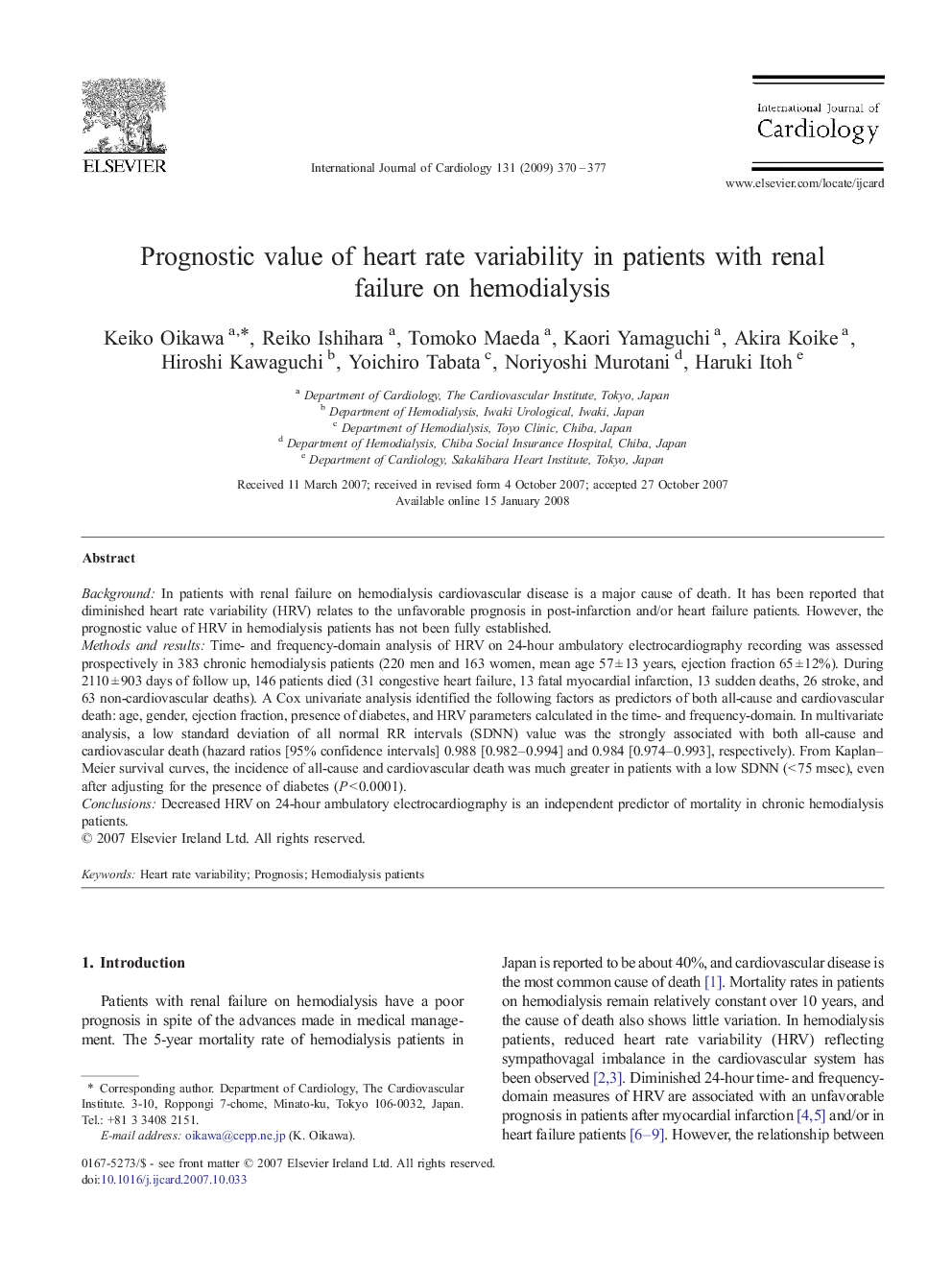| Article ID | Journal | Published Year | Pages | File Type |
|---|---|---|---|---|
| 2933735 | International Journal of Cardiology | 2009 | 8 Pages |
BackgroundIn patients with renal failure on hemodialysis cardiovascular disease is a major cause of death. It has been reported that diminished heart rate variability (HRV) relates to the unfavorable prognosis in post-infarction and/or heart failure patients. However, the prognostic value of HRV in hemodialysis patients has not been fully established.Methods and resultsTime- and frequency-domain analysis of HRV on 24-hour ambulatory electrocardiography recording was assessed prospectively in 383 chronic hemodialysis patients (220 men and 163 women, mean age 57 ± 13 years, ejection fraction 65 ± 12%). During 2110 ± 903 days of follow up, 146 patients died (31 congestive heart failure, 13 fatal myocardial infarction, 13 sudden deaths, 26 stroke, and 63 non-cardiovascular deaths). A Cox univariate analysis identified the following factors as predictors of both all-cause and cardiovascular death: age, gender, ejection fraction, presence of diabetes, and HRV parameters calculated in the time- and frequency-domain. In multivariate analysis, a low standard deviation of all normal RR intervals (SDNN) value was the strongly associated with both all-cause and cardiovascular death (hazard ratios [95% confidence intervals] 0.988 [0.982–0.994] and 0.984 [0.974–0.993], respectively). From Kaplan–Meier survival curves, the incidence of all-cause and cardiovascular death was much greater in patients with a low SDNN (< 75 msec), even after adjusting for the presence of diabetes (P < 0.0001).ConclusionsDecreased HRV on 24-hour ambulatory electrocardiography is an independent predictor of mortality in chronic hemodialysis patients.
